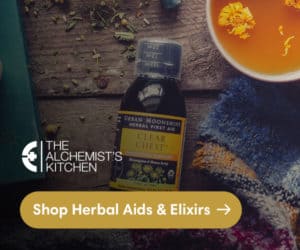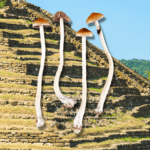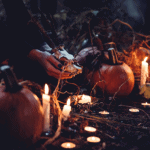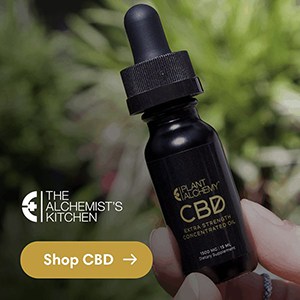In the Western world, Lavandula angustifolia is one of those adored household-name herbs. We need not look farther than the local grocery store to find the familiarly intoxicating scent in nearly everything, from laundry detergent to body lotion. Many know that Lavender has relaxing qualities, but this herb offers us much varied, expansive medicine.
Etymology & Botany
Though there are nearly 50 species of Lavandula, this article is focused on the most widely cultivated and used, Lavandula angustifolia. Lavender gets its name from the Latin word, ‘lavare’ which means ‘to wash.” With its characteristic square stem and fragrant volatile oils, this herb is in the Lamiaceae, or Mint family. This shrubby herb grows from 1 to 3 feet in height with opposite, sessile leaves and beautiful blue-violet flowers that cluster on long stems in terminating spikes. The flowers are composed of whorls of blooms, each row containing six to ten flowers. This herb is indigenous to western Europe and the mountainous regions bordering the western Mediterranean, though it is now cultivated extensively around the globe. Other species of Lavender can be found growing in India, Asia, the Canary Islands, and Eastern Africa. It tends to prefer well-drained, sandy or gravelly soil and a dry, sunny climate.2
Traditional Uses
Every traditional culture that’s come in contact with this flower has prized and recognized its unforgettable scent and calming properties. The following overview is based only on written records and is, of course, incomplete. Countless beings from known and unknown cultures have used the various species of Lavandula in countless and important ways.
Origin
The written history goes back over 2,500 years to Ancient Greek society. The Greeks called it “Nardus” or “Nard” after the Syrian city of Naarda where it was abundant. Lavender was considered to be one of their holy herbs, and was used to prepare sacred anointments. “Nard” is also mentioned in the Old Testament, most notably in the ‘Song of Solomon’.3 In ancient Rome, Lavender flowers were quite expensive and just a pound sold for about a farmer’s monthly wages, or 100 denarii. The Romans used it medicinally, for digestive upset, spasms, and pain as well as a scent for their baths, beds, clothes and hair.2
Herbal History
Lavender has been officially recognized in the British Pharmacopoeia for over 200 years, originally as part of a thirty ingredient formula syrup which was used to treat ‘the Falling-sickness, and all cold Distempers of the Head, Womb, Stomach and Nerves; against the Apoplexy, Palsy, Convulsions, Megrim, Vertigo, Loss of Memory, Dimness of Sight, Melancholy, Swooning Fits and Barrenness in Women.’ Nicholas Culpeper, an influential herbalist, physician, and astrologer from the 16th century wrote of its essential oil, ‘The chymical oil drawn from Lavender, usually called Oil of Spike, is of so fierce and piercing a quality, that it is cautiously to be used, some few drops being sufficient to be given with other things, either for inward or outward griefs.’1 In WWI, Lavender oil was used as an analgesic antiseptic to swab wounds, and the French Academy of Medicine recommended the oil for surgical purposes, sores, and burns.4
Lavender’s Herbal Indications
Lavender is drying, bitter, and cooling but stimulating and dispersing energetically. It has analgesic, anti-fungal, aromatic, relaxant, and anxiolytic properties. It is indicated in cases of inflammation and heat which needs to be dispersed.
Soothes Tension & Anxiety
Lavender is a nervine, meaning its primary action in the body is to support and relax the nervous system. In a study published by the journal Phytomedicine, its oil was found to be as effective as the pharmaceutical drug Lorazepam, without the side effects.4 Herbalist Thomas Easley describes it as a “nerve sedative for headaches, anxiety, insomnia, and depression that comes from constant worry and for high strung, nervous, self-absorbed people who need to relax.”6 In a representative 2016 German study, it was found that taking a daily Lavender extract had a measurably antidepressant effect and greatly improved the daily lives and capabilities of patients suffering from MADD (Mixed Anxiety and Depressive Disorder).4
Digestive Aid
Like most aromatic mints, Lavender acts as a carminative, meaning it contains aromatic oils which relax the smooth muscle of the intestines, helping to expel painful or disruptive gas.1 Since it also relaxes the whole nervous system, taking Lavender can help ease us into the parasympathetic “rest and digest” state necessary for optimal digestion. In many modern European pharmacopoeias, Lavender extract and Lavender tea are recognized as remedies for digestive upset, especially upper abdominal nervous stomach irritation, and nervous intestinal discomfort.6 It is a popular ingredient in bitters, or herbal formulations meant to be taken before or after meals to aid digestion; for this reason and due to its lovely, floral flavor, it is also a common culinary spice in much of Europe.
Pain and Inflammation Relief
This herb has the potent, remarkable ability to relieve pain and inflammation quickly. It disperses heat and has a cooling effect, especially topically, and the diluted essential oil has been used for everything from burns to infection to carpal tunnel. A 2015 study found that when diluted essential oil was applied topically during one test, it was analgesic and provided pain relief comparable to that of the prescription medication, Tramadol.5 Herbalist Maud Grieve advised, “A few drops of the essence of Lavender…outwardly applied relieves toothache, neuralgia, sprains, and rheumatism.”2 Lavender’s anxiolytic and relaxant effects can even be felt through scent alone; the essential oil of Lavender may also help to relieve chronic, muscular, and headache induced pain through aromatherapy treatment if topical or internal application is undesirable.
Contraindications
Lavender is considered a generally safe herb and is tolerated by most individuals. When taken internally, it may cause headache, or increased appetite. Though uncommon, essential oil can cause skin irritation; avoid applying the undiluted essential oil directly to the skin. The essential oil should be kept away from pets and children under 12. Lavender may increase the effects of certain sedative pharmaceuticals.5 As with any herb or supplement, consult an informed herbalist or primary healthcare practitioner before use.
Lavender’s Herbal Applications
This herb can be employed in many forms by the skillful herbalist; the following preparation suggestions are the most widely used and accessible to obtain.
Lavender Tea
Tea is a delightful and fragrant experience with calming, tummy soothing effects. To prepare, simply steep two tablespoons of dried lavender flowers in 12 ounces of just boiled water. Cover (so as not to release the beneficial volatile oils) and steep for 10-15 minutes, then strain and enjoy!
Lavender Tincture
A tincture, vinegar, or glycerite can be made by pouring your menstruum of choice over dried or fresh blossoms in a 1:2 ratio of plant matter to liquid for fresh blossoms and a 1:5 ratio for dried flowers. Store in a glass jar and let sit for at least 6 weeks, shaking daily. When it’s ready, press all liquid out and enjoy in drop doses.
Lavender Oil
Since this herb is so wonderful at dispersing heat and relieving pain, one of my favorite applications of Lavender is for treating minor burns; I keep a small bottle of diluted essential oil in my fridge for those inevitable cooking mishaps. The oil can also be kept in a small glass roller bottle and used to treat headaches and minor muscle pains.
Lavender Sachets
Small sachets of dried herb are a sweet way to fragrance clothing and encourage restful sleep with placid dreams. Simply fill a small drawstring pouch with dried blossoms, and store in a drawer or suitcase with clean clothing. For serene dreams, store the sachet under your pillow or on your nightstand. Squeeze sachet to refresh the scent!
Sourcing
It is widely cultivated and available! See if you can find some fresh Lavender blooming mid-summer in a garden or at a local organic farm. If you can’t find Lavender near you, it can be ordered from reputable sources on the internet. Or ideally, purchased from small, local businesses, like a neighborhood herb store or health food co-op. Carefully selected, small batch herbal products with Lavender can be found at The Alchemist’s Kitchen. Some of my absolute favorites include: this Migraine tincture and these Unwind CBD Bath Bombs from Plant Alchemy, and this Brighten Hydrating Mood Mist by Essential Rose Life.
Sources
- Engels, Gail. “Lavender” – Link
- Grieve, Maud. “A Modern Herbal – Lavenders” – Link
- Hazard, Sara. “Lavender (Lavandula angustifolia)” – Link
- Oliff, Heather S. “Lavender Oil Inhalation Prior to Surgery-Like Setting Reduces Perceptions of Stress and Pain” – Link
- Silva GL, Luft C, Lunardelli A, et al. “Antioxidant, analgesic and anti-inflammatory effects of lavender essential oil.” – Link
- Stebbins, Hayden. “Lavender Monograph” – Link










